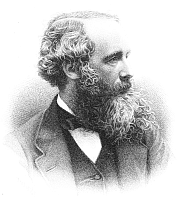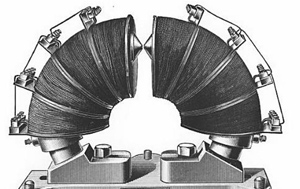 |
Maxwell Unit | Maxwell Legacy Concepts |
|---|
In a nutshell |
The concept of magnetic flux relates to the magnetic field B that passes perpendicularly across a surface. The 'maxwell' (Mx) is the unit of magnetic flux in cgs electromagnetic units. 1 Mx = 1 gauss cm2 . The Mx is no longer in circulation since international standards have moved to the SI units in which magnetic flux is measured in webers. It is unfortunate that neither Maxwell nor Gauss are now commemorated in current units, given how much both contributed to the understanding of magnetism. Since the Earth's magnetic field is only a little larger than 1 gauss, the Mx represents an 'everyday' flux. The weber is a much larger unit equal to 100 million Mx. The amp, volt, ohm, faraday and coulomb existed alongside cgs units from the late 19th century as practical units employed by electricians. One motivation for establishing the modern SI units was to include these with the kilogram, metre and second into a coherent set of units that would preserve these practical electrical measurements. The modern SI system dates from 1960. |
 The flux between the poles of the magnet is the product of the field strength and the cross-sectional area of a pole. The flux between the poles of the magnet is the product of the field strength and the cross-sectional area of a pole. |
|---|
| Technical detail | Flux is a central concept in electromagnetism. For a small surface it is the product of the normal component of B and the surface element (B.dS). For a larger surface it is the integral of this product over the whole surface. The Maxwell equation ∇.B = 0 can be interpreted via a very useful theorem of Gauss to imply that the magnetic flux though any closed surface is zero. This says that there are no sources of magnetic field that are analogous to electric charges. Currents produce magnetic fields but fields that always both emerge and return so that the flux through any closed surface is zero even if it contains a current within it. Changing magnetic flux through a circuit generates an EMF in the circuit, which is what Faraday discovered. This is the effect underlying dynamos and alternators that produce voltage and current from mechanical work. The electrical generator mechanism creates motion of magnetic flux through a circuit by moving the magnetic field or the circuit, or both. Nuclear power stations, wind, tidal and biogas electric generators and conventional power stations all use this effect. Without it we would be left with little except solar panels to charge our batteries. JSR 2016 |
||
|---|---|---|---|